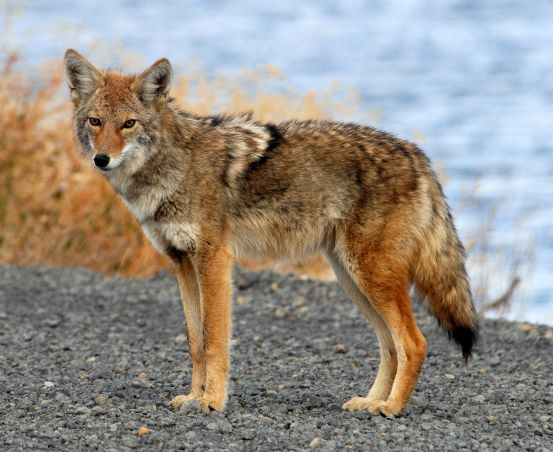On The Interstate
I spent four hours traveling north through Michigan last week, listing to The Ramones. Yesterday, I spent four hours traveling south through Michigan on the return trip with two biologists. Somewhat of a contrast.
These biologists made the northbound trip last week as well. One of them noted at least eight coyotes and several foxes hanging around the shoulder of the highway.
I have made that trip a kazillion times in my lifetime and I have NEVER seen a coyote or a fox on the interstate. Either he was especially lucky, or his eye for this sort of thing is far more trained than mine. I presume it is the latter.
To be honest, I didn’t even know that we had coyotes in Michigan. I thought that a coyote was a Far West-type critter. And so I looked it up.
Sure enough, we have lots of coyotes in Michigan. They are very adaptable creatures and can survive, even flourish, in almost any environment.
About the time the biologist told me about the coyotes, we passed by a road kill. We were traveling about 70 miles per hour, and driving at night, so I could not make out what it was. My biologist companion told me: “That was a coyote”. I found that fascinating, although not quite fascinating enough to turn around for a closer look.
What an ironic turn of event! The coyote must have been attracted to the interstate because of road kill. As he wandered around the interstate looking for dinner, he became road kill himself. Now he is dinner for some other creature who, by feasting on the coyote, runs the risk of becoming road kill as well. The life/death cycle continues.
I heard a story of a politician who used road kill as justification for building a highway through a wilderness area. The highway, he reasoned, would create a lot of road kill which would create an abundant food source for wildlife. Interesting. We have to kill wildlife in order to create food for wildlife. So killing wildlife must be good for wildlife.
This might depend upon which wildlife is the road kill and which wildlife considers this an appetizing source for nutrition. The turkey vulture population, for example, flourishes along our highways.
I heard a somewhat similar argument after the discovery in Arkansas of the “extinct” ivory-billed woodpecker. The extinction was thought to be caused by the destruction of the hardwood forests in the Southeast. Now that we know that this species is not extinct, we have proof that destruction of forests does not harm birds! Or so the argument goes.

I am used to seeing white-tailed deer on the interstate. They are an all-to-frequent, and dangerous, part of our highway system. Deer, though, are not carnivores, so shouldn’t be attracted to road kill. So what makes the interstate so attractive to deer? Is it simply too crowded in the woods? If you know the answer, email it to the Café. Otherwise, it will remain a mystery, at least to me.
On my northbound trip last week, I saw the largest deer I have ever seen. It was standing peacefully on the side of the road, minding its own business. I was doing the driving at the time, traveling night and traveling fast, so I didn’t get more than a glimpse. But it was huge. So huge, that it may not have been a deer at all. My guess is that it was an elk. At least I think we have elk in Michigan. If not, it might have been a cow.
As I write this, I realize that my most recent exposure to wildlife come from driving on the interstate highway. Sort of like a drive-thru zoo, but at extremely high speeds. As soon as the weather gets warmer, I will get deeper into the woods. I think the wilderness may be a more natural habitat than I-75.
